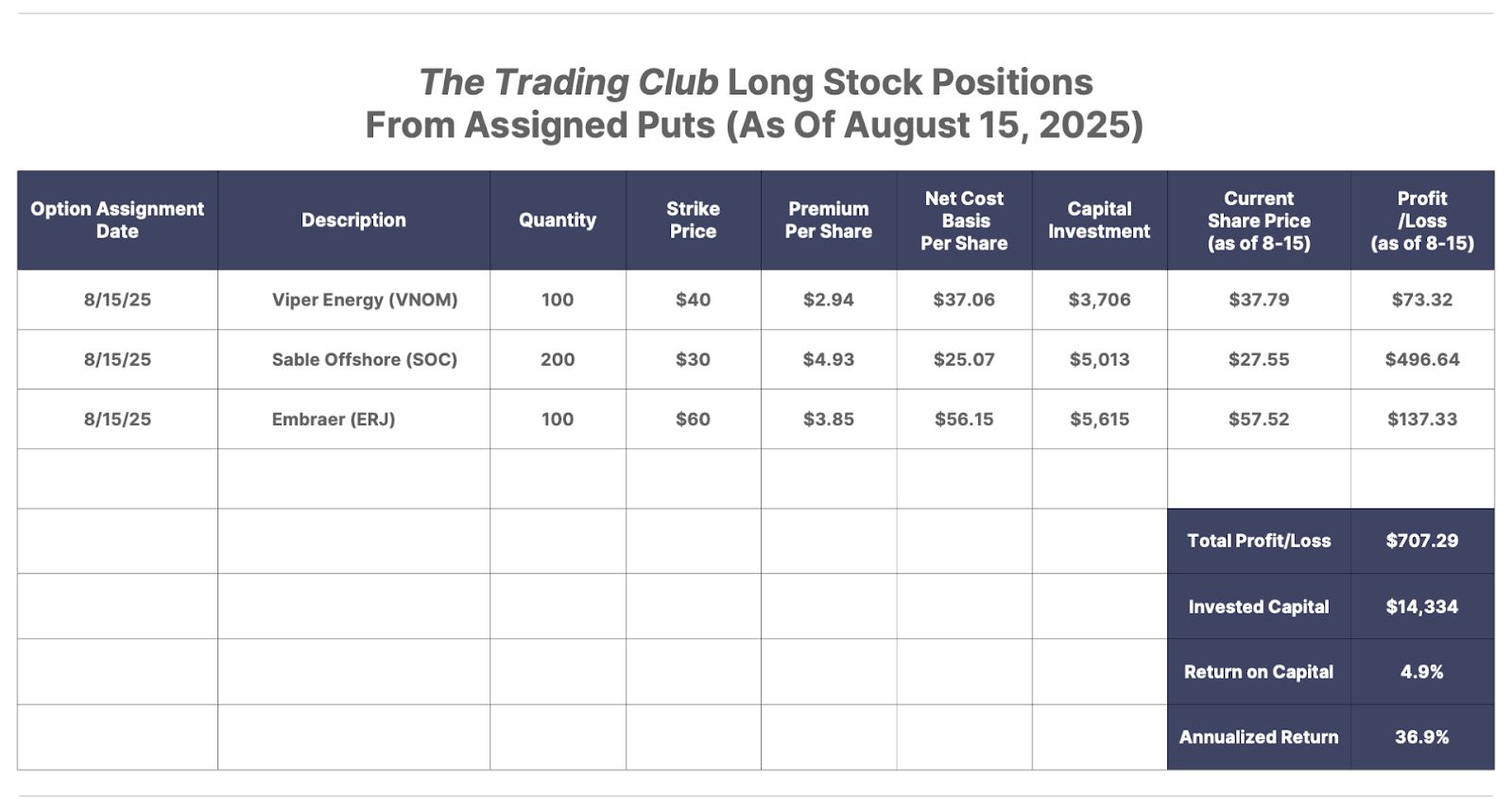- Porter's Daily Journal
- Posts
- The Trading Club Report Card
The Trading Club Report Card
Porter's Journal Issue #96, Volume #2

A Look At The First Quarter Of Strategy, Trades, And Performance
This is Porter’s Daily Journal, a free e-letter from Porter & Co. that provides unfiltered insights on markets, the economy, and life to help readers become better investors. It includes weekday editions and two weekend editions… and is free to all subscribers.
Selling cash-secured puts… A deep dive into The Trading Club performance… Selling covered calls for additional income… Powell’s signals from Jackson Hole… New homes outsell existing ones… |
Table of Contents
On Monday, we previewed the blockbuster results from the first 77 days of Porter & Co.’s The Trading Club, through August 15.
In today’s Daily Journal, I (Ross Hendricks) will dive deeper into some of the strategies and specific trades that drove these returns. We’ll also explain the downsides of option selling, and how it can all go wrong. First, let’s pick up where we left off on Monday, when we previewed the bread and butter of our trading strategy: selling cash-secured puts.
As of the close of trading last Friday, August 15, we’ve closed eight of our 13 put positions for a total profit of $3,528. These trades required a total capital investment of $66,500 in cash reserves set aside, and had an average duration of 59 days. This works out to an annualized return of 37.6% as shown below:

As some of these earlier trades expired or were closed early, we redeployed a portion of the capital into new put sales in shares of tobacco giant Philip Morris International (PM) and mortgage REIT Annaly Capital (NLY), which are both in the green:

Conversely, three of the put sales we’ve made so far have closed “in the money,” meaning the stock price declined to the point of triggering an assignment, or the purchase of shares in the underlying stock. However, because of the put premium we received – which effectively lowers the cost basis on the position – we’re sitting on profits across all three of these stocks.
The average return across all three of our put sales that were assigned into long stock positions is 4.9%, over an average trade duration of 56 days, working out to a 36.9% annualized return:

Now, what happens after we end up owning a stock as a result of a put option assignment? In that case, we can turn to our next option selling strategy: selling covered calls for additional income.